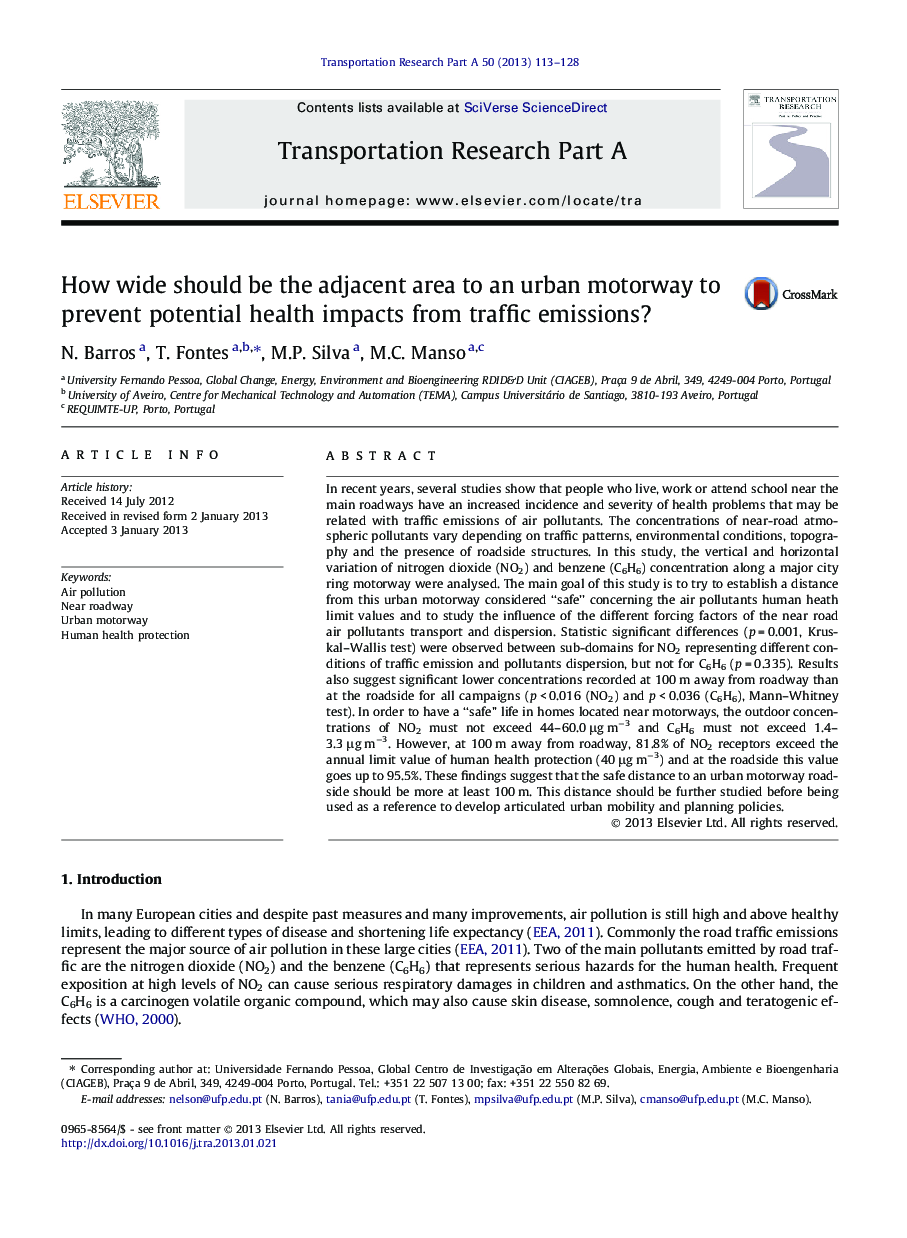| کد مقاله | کد نشریه | سال انتشار | مقاله انگلیسی | نسخه تمام متن |
|---|---|---|---|---|
| 310810 | 533371 | 2013 | 16 صفحه PDF | دانلود رایگان |

In recent years, several studies show that people who live, work or attend school near the main roadways have an increased incidence and severity of health problems that may be related with traffic emissions of air pollutants. The concentrations of near-road atmospheric pollutants vary depending on traffic patterns, environmental conditions, topography and the presence of roadside structures. In this study, the vertical and horizontal variation of nitrogen dioxide (NO2) and benzene (C6H6) concentration along a major city ring motorway were analysed. The main goal of this study is to try to establish a distance from this urban motorway considered “safe” concerning the air pollutants human heath limit values and to study the influence of the different forcing factors of the near road air pollutants transport and dispersion. Statistic significant differences (p = 0.001, Kruskal–Wallis test) were observed between sub-domains for NO2 representing different conditions of traffic emission and pollutants dispersion, but not for C6H6 (p = 0.335). Results also suggest significant lower concentrations recorded at 100 m away from roadway than at the roadside for all campaigns (p < 0.016 (NO2) and p < 0.036 (C6H6), Mann–Whitney test). In order to have a “safe” life in homes located near motorways, the outdoor concentrations of NO2 must not exceed 44–60.0 μg m−3 and C6H6 must not exceed 1.4–3.3 μg m−3. However, at 100 m away from roadway, 81.8% of NO2 receptors exceed the annual limit value of human health protection (40 μg m−3) and at the roadside this value goes up to 95.5%. These findings suggest that the safe distance to an urban motorway roadside should be more at least 100 m. This distance should be further studied before being used as a reference to develop articulated urban mobility and planning policies.
► Safe adjacent area to an urban highway to prevent potential health impacts should have more than 100 m.
► Different sub-domains have statistic significant differences of pollutant concentrations.
► Concentrations variability between sub-domains were mainly due to nearby obstacles.
► About 100 m away from 81.8% of NO2 receptors exceed the annual limit value of human health protection.
Journal: Transportation Research Part A: Policy and Practice - Volume 50, April 2013, Pages 113–128